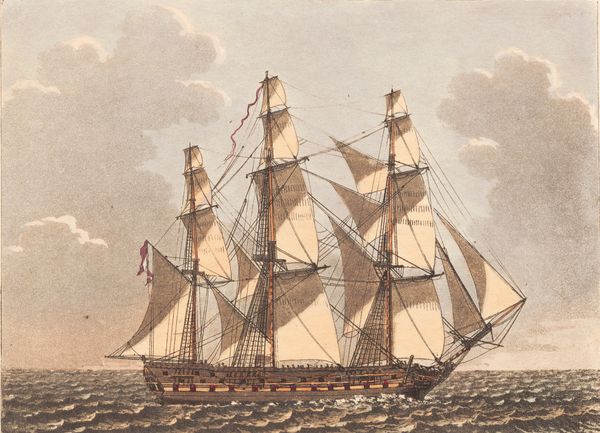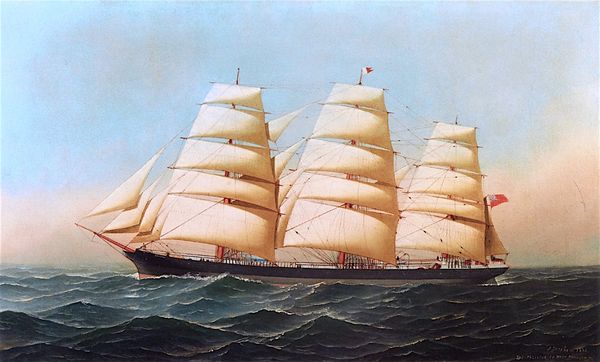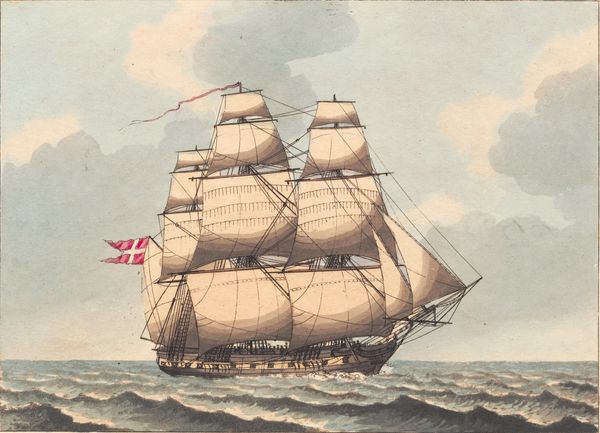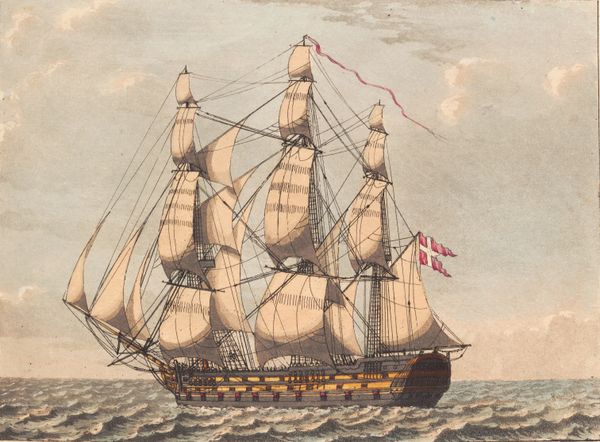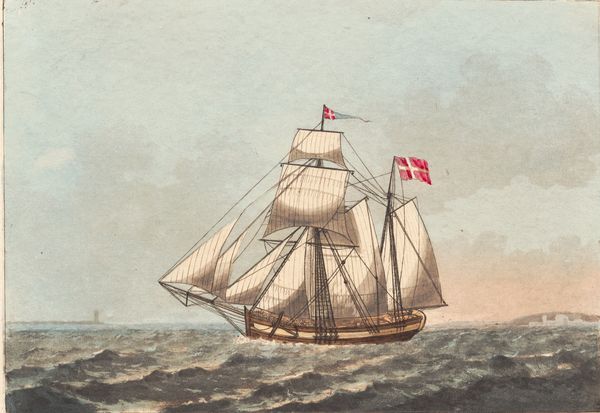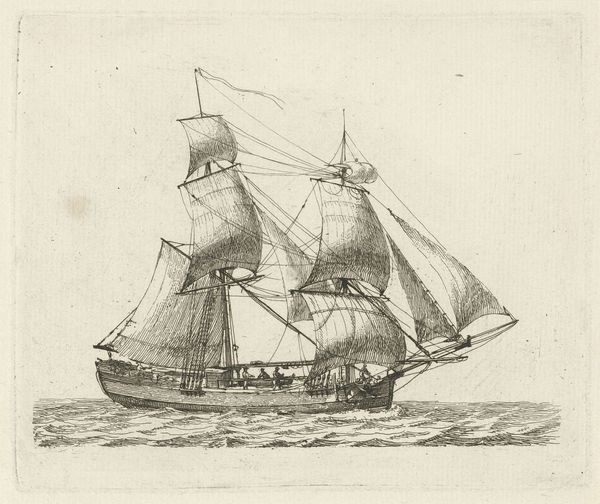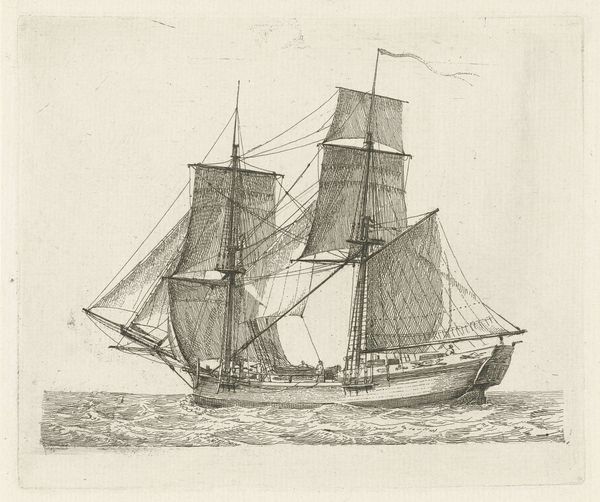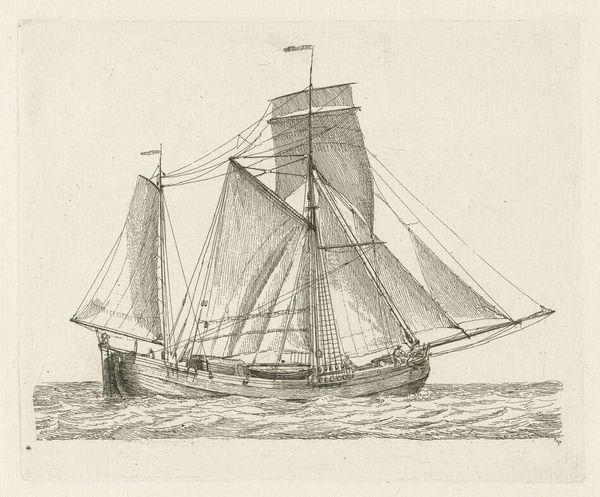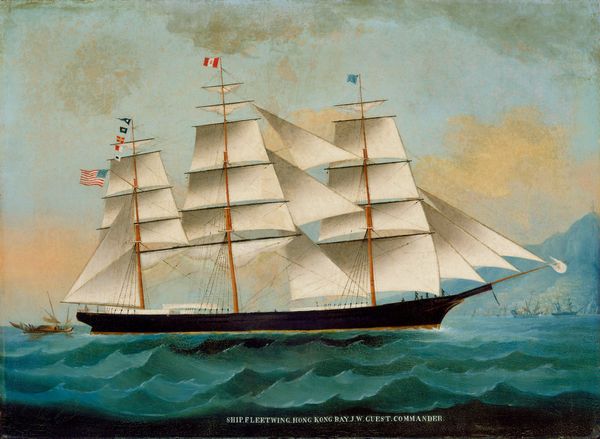
lithograph, print
#
lithograph
# print
#
landscape
#
charcoal drawing
#
hudson-river-school
#
watercolour illustration
#
history-painting
#
watercolor
#
realism
Copyright: Public domain
Curator: This lithograph from 1847 depicts the U.S. ship of the line Ohio, a massive vessel boasting 104 guns. What are your first impressions? Editor: There's a subdued quality to it, almost ethereal. The palette is so restrained, almost monochromatic, making the ship feel less like a war machine and more like a ghost on the water. And, given it's a lithograph, the processes of drawing and printing are significant. Curator: Indeed. Currier and Ives, while often considered popular printmakers, operated within a specific historical context. The glorification of maritime power, especially in the pre-Civil War era, needs to be understood in relation to evolving national identity, debates over expansion, and the reliance on particular kinds of labor at sea and on land. Editor: Absolutely. Consider the sheer amount of material and labor needed to build, maintain, and operate a ship like this. The timber, the ironwork, the canvas – where did these materials come from? And who was exploited to get them? We should never separate art and manufacture from their supply chains and points of consumption. Curator: It is compelling how this particular ship featured in a period of intense naval transformation too. You had wooden sailing ships gradually being superseded by ironclad, steam-powered vessels. We could examine it as representative of this historical tipping point. It is fascinating how a simple lithograph can encapsulate and reflect so much about a country's changing political and economic landscape. Editor: I also notice the ship's flags: the clear declaration of identity with a certain regime or ruling entity; or more simply its owners; who would have a stake in production. The ship exists only as a functional enterprise, the materials involved a set of resources geared towards production or even a mechanism for social change. Curator: Seeing it in this way helps reveal layers of social context which otherwise may remain unseen, from labor and naval power, to technology and design! Editor: Yes, moving from simply observing the art piece to revealing those deeper structural, tangible roots. It certainly highlights important things.
Comments
No comments
Be the first to comment and join the conversation on the ultimate creative platform.


